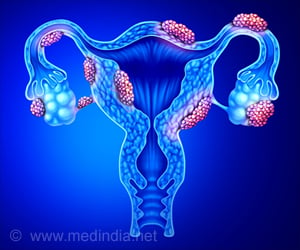Girls and young women between the ages of 12 and 35, who exercise on a regular basis can substantially cut their risk of developing breast cancer, says a new study.
Girls and young women between the ages of 12 and 35, who exercise on a regular basis can substantially cut their risk of developing breast cancer, says a new study.
Researchers at Washington University School of Medicine in St. Louis and Harvard University in Boston found that remaining physically active until the age of 35 can reduce the chances of developing the disease before menopause by up to 23 per cent.In the largest and most detailed analysis to date of the effects of exercise on premenopausal breast cancer, the study of nearly 65,000 women found that high levels of physical activity from ages 12 to 22 contributed most strongly to the lower breast cancer risk.
"We don't have a lot of prevention strategies for premenopausal breast cancer, but our findings clearly show that physical activity during adolescence and young adulthood can pay off in the long run by reducing a woman's risk of early breast cancer," said lead investigator Graham Colditz, M.D., Dr.P.H., the Niess-Gain Professor and associate director of Prevention and Control at the Siteman Cancer Center at Washington University School of Medicine and Barnes-Jewish Hospital.
"This is just one more reason to encourage young girls and women to exercise regularly," he added.
One-fourth of all breast cancers are diagnosed in women before menopause. Numerous studies have shown that physical activity reduces the risk of postmenopausal breast cancer, but the few studies that have looked at the influence of exercise on breast cancer risk before menopause have produced conflicting results.
For the current analysis, researchers examined data on a subset of women enrolled in the Nurses' Health Study II, a prospective study of registered nurses ages 24 to 42. These 64,777 women had filled out detailed annual questionnaires about their levels of physical activity from age 12 on. After six years of follow-up, 550 women had been diagnosed with breast cancer.
Advertisement
The levels of physical activity reported by the most active women were the equivalent of running 3.25 hours a week or walking 13 hours a week. The benefit of exercise was not linked to a particular sport or intensity but related to total activity.
Advertisement
One leading theory to explain the lower risk of breast cancer among active young women is that exercise reduces their exposure to estrogens. Numerous studies have shown that the more estrogen a woman is exposed to, the greater her risk for breast cancer.
Thus, women who begin menstruating later or enter menopause early have a lower risk of breast cancer. And young women who are physically active are more likely to start their periods later and less likely to have regular cycles when they begin their periods.
The study appears online in the Journal of the National Cancer Institute.
Source-ANI
SRM











